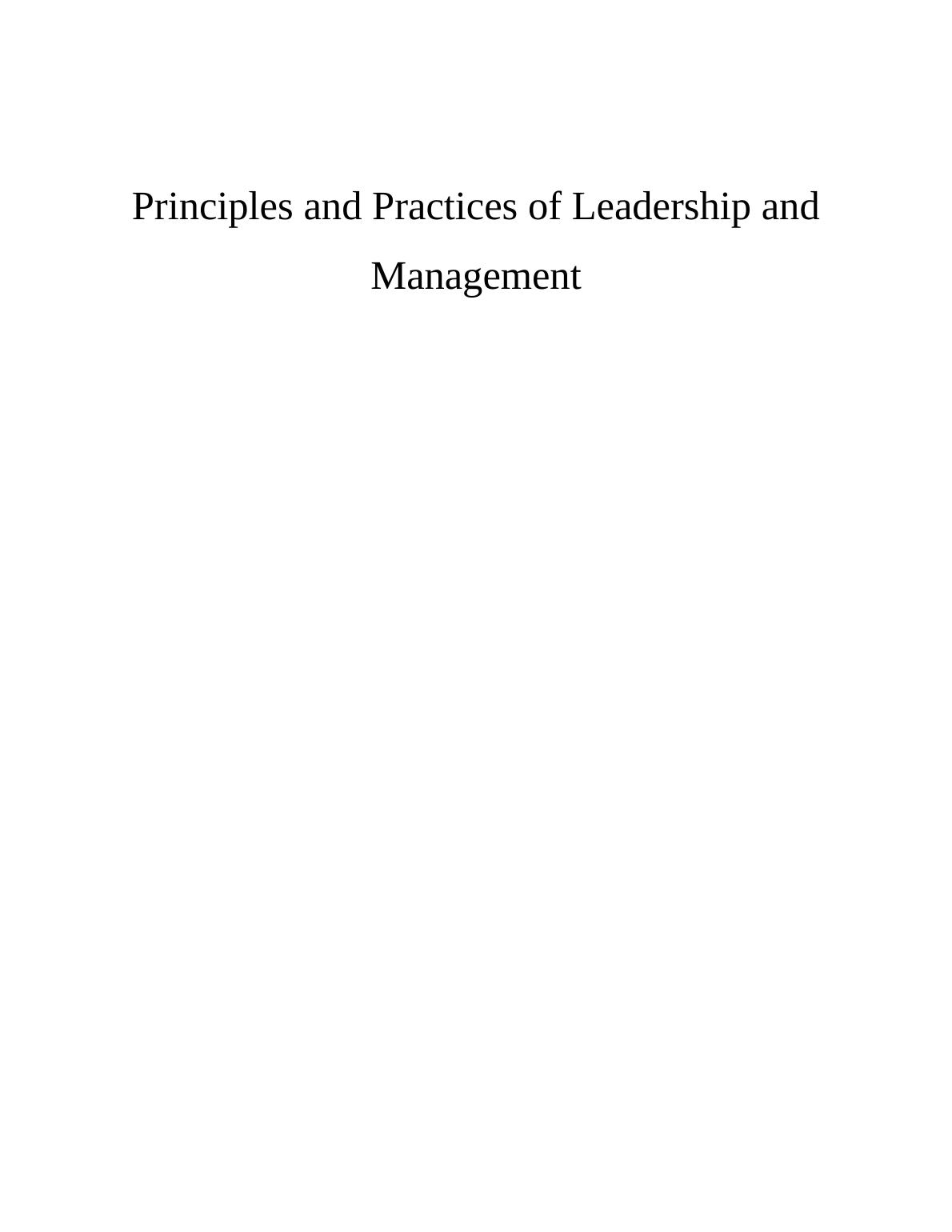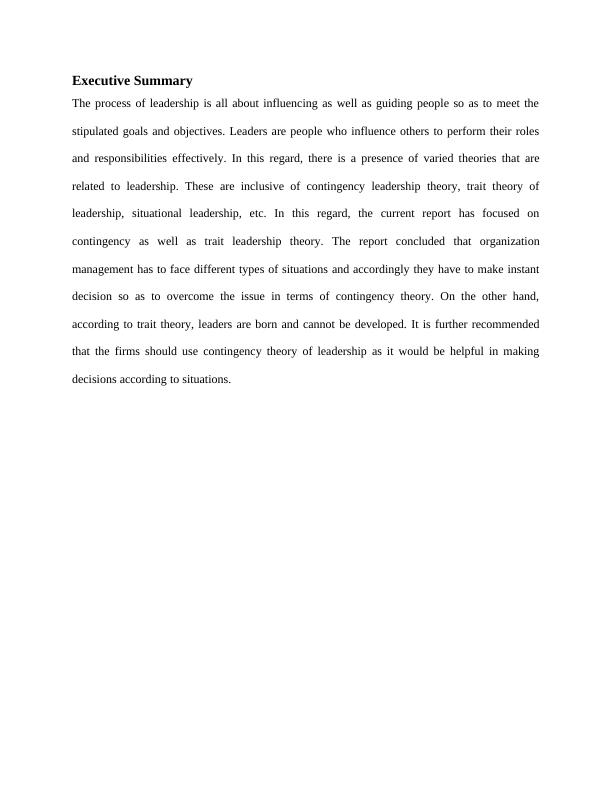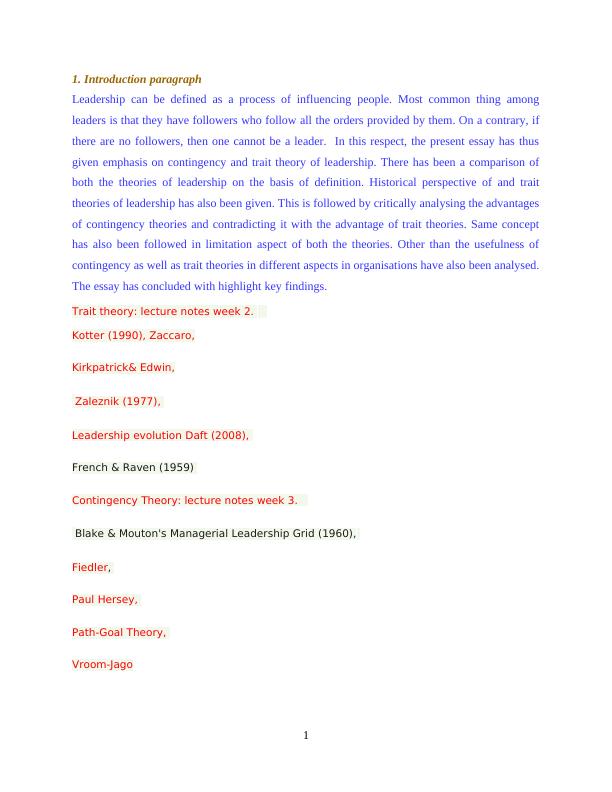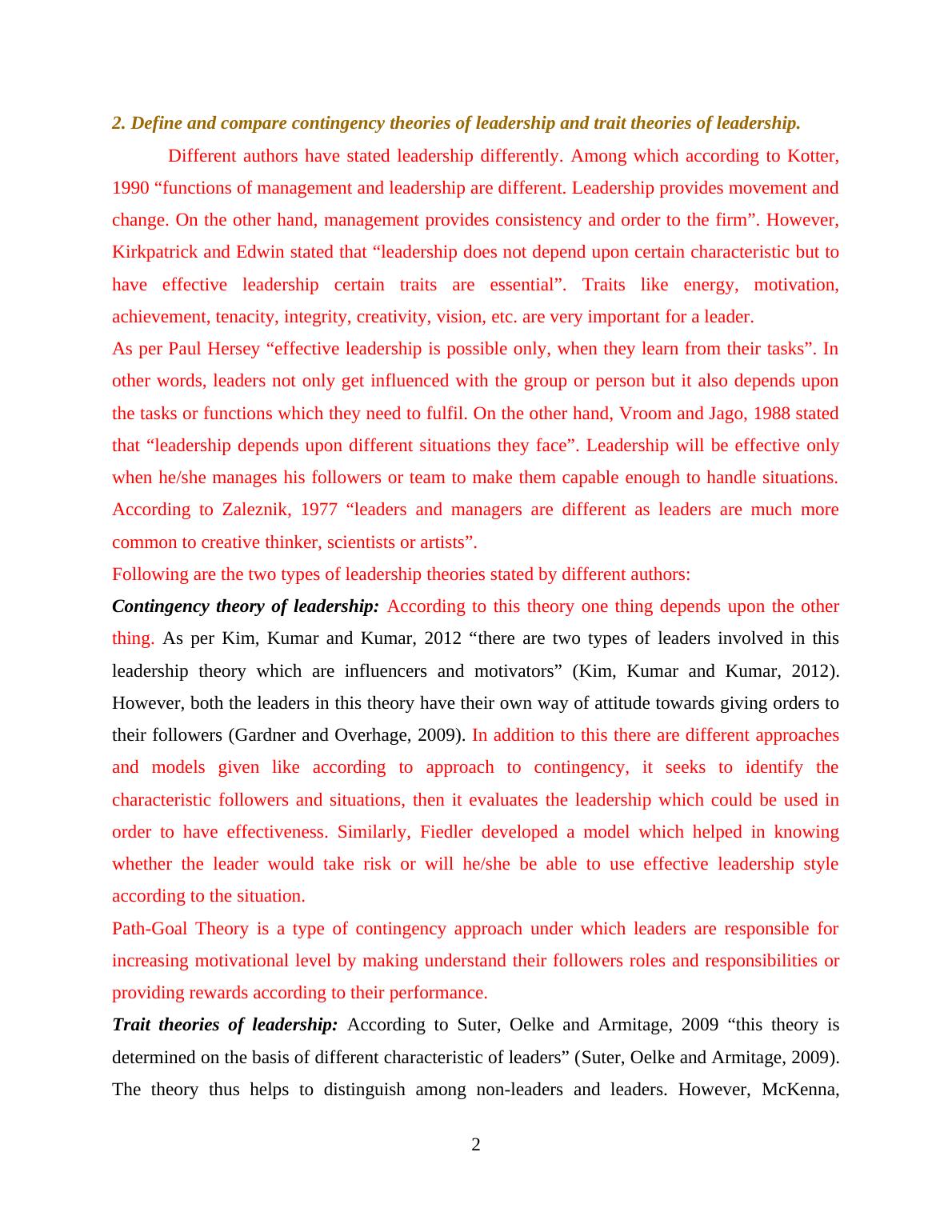Principles and Practices of Leadership and Management Executive
Added on 2020-02-05
13 Pages4120 Words40 Views
Principles and Practices of Leadership andManagement

Executive SummaryThe process of leadership is all about influencing as well as guiding people so as to meet thestipulated goals and objectives. Leaders are people who influence others to perform their rolesand responsibilities effectively. In this regard, there is a presence of varied theories that arerelated to leadership. These are inclusive of contingency leadership theory, trait theory ofleadership, situational leadership, etc. In this regard, the current report has focused oncontingency as well as trait leadership theory. The report concluded that organizationmanagement has to face different types of situations and accordingly they have to make instantdecision so as to overcome the issue in terms of contingency theory. On the other hand,according to trait theory, leaders are born and cannot be developed. It is further recommendedthat the firms should use contingency theory of leadership as it would be helpful in makingdecisions according to situations.

1. Introduction paragraph Leadership can be defined as a process of influencing people. Most common thing amongleaders is that they have followers who follow all the orders provided by them. On a contrary, ifthere are no followers, then one cannot be a leader. In this respect, the present essay has thusgiven emphasis on contingency and trait theory of leadership. There has been a comparison ofboth the theories of leadership on the basis of definition. Historical perspective of and traittheories of leadership has also been given. This is followed by critically analysing the advantagesof contingency theories and contradicting it with the advantage of trait theories. Same concepthas also been followed in limitation aspect of both the theories. Other than the usefulness ofcontingency as well as trait theories in different aspects in organisations have also been analysed.The essay has concluded with highlight key findings. Trait theory: lecture notes week 2. Kotter (1990), Zaccaro,Kirkpatrick& Edwin,Zaleznik (1977),Leadership evolution Daft (2008),French & Raven (1959)Contingency Theory: lecture notes week 3. Blake & Mouton's Managerial Leadership Grid (1960),Fiedler,Paul Hersey,Path-Goal Theory,Vroom-Jago1

2. Define and compare contingency theories of leadership and trait theories of leadership.Different authors have stated leadership differently. Among which according to Kotter,1990 “functions of management and leadership are different. Leadership provides movement andchange. On the other hand, management provides consistency and order to the firm”. However,Kirkpatrick and Edwin stated that “leadership does not depend upon certain characteristic but tohave effective leadership certain traits are essential”. Traits like energy, motivation,achievement, tenacity, integrity, creativity, vision, etc. are very important for a leader.As per Paul Hersey “effective leadership is possible only, when they learn from their tasks”. Inother words, leaders not only get influenced with the group or person but it also depends uponthe tasks or functions which they need to fulfil. On the other hand, Vroom and Jago, 1988 statedthat “leadership depends upon different situations they face”. Leadership will be effective onlywhen he/she manages his followers or team to make them capable enough to handle situations.According to Zaleznik, 1977 “leaders and managers are different as leaders are much morecommon to creative thinker, scientists or artists”.Following are the two types of leadership theories stated by different authors:Contingency theory of leadership: According to this theory one thing depends upon the otherthing. As per Kim, Kumar and Kumar, 2012 “there are two types of leaders involved in thisleadership theory which are influencers and motivators” (Kim, Kumar and Kumar, 2012).However, both the leaders in this theory have their own way of attitude towards giving orders totheir followers (Gardner and Overhage, 2009). In addition to this there are different approachesand models given like according to approach to contingency, it seeks to identify thecharacteristic followers and situations, then it evaluates the leadership which could be used inorder to have effectiveness. Similarly, Fiedler developed a model which helped in knowingwhether the leader would take risk or will he/she be able to use effective leadership styleaccording to the situation.Path-Goal Theory is a type of contingency approach under which leaders are responsible forincreasing motivational level by making understand their followers roles and responsibilities orproviding rewards according to their performance.Trait theories of leadership: According to Suter, Oelke and Armitage, 2009 “this theory isdetermined on the basis of different characteristic of leaders” (Suter, Oelke and Armitage, 2009).The theory thus helps to distinguish among non-leaders and leaders. However, McKenna,2

End of preview
Want to access all the pages? Upload your documents or become a member.
Related Documents
Two Different Theories of Leadership | Essaylg...
|15
|4675
|40
Introduction to Managing and Leading Peoplelg...
|11
|3501
|32
Managing Organizations and Leading People Assignment 2022lg...
|4
|760
|17
Two Different Theories of The Leadership | Essaylg...
|8
|2586
|84
Introduction to People Management- Assignmentlg...
|11
|2655
|308
Types of Leadership Theories and Their Impacts on Businesslg...
|12
|2637
|85
